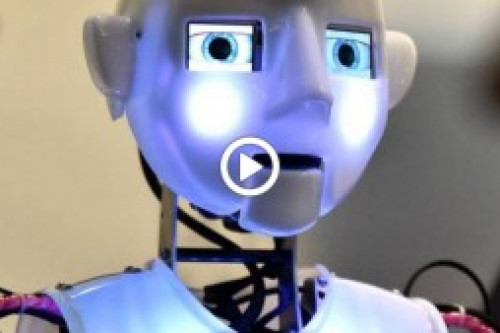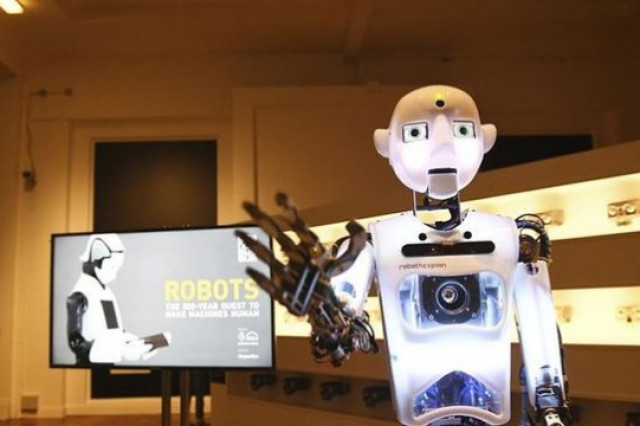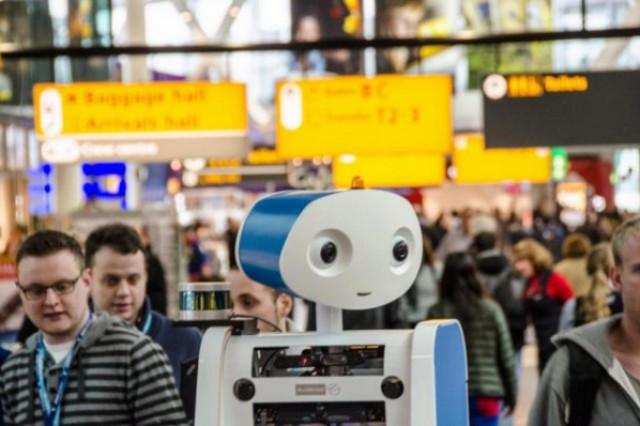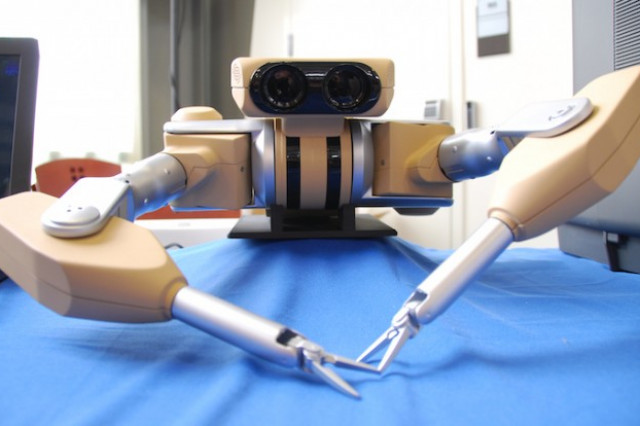Robotics: Always and everywhere
Robotics is a mature technology in industrial sectors and has an impressive growth rate: sales have increased from the 65,000 units sold in 1995 to 290,000 in 2015 (IFR 2016a). From a geographical perspective, Asia accounted for two-thirds of all industrial robots installed in 2015. The countries with the largest stock of active industrial robots are also the most industrialized: China, Japan, USA, Germany and South Korea. As in other key technologies, the concentration of industrial robots in industrialized countries should not obscure the fact that the stock of industrial robots is also growing substantially in many other countries, making investment in robots a general feature of economic growth worldwide.
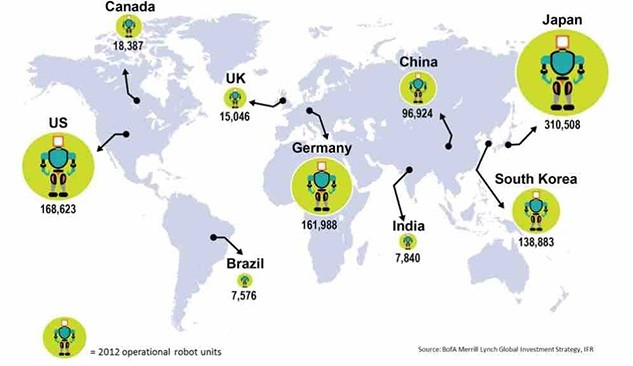
Collaboration between human workers and robots is on the rise. New production models based on this collaboration and the so-called “cobots” (robots that work cooperatively) are redefining industry, and appear in reindustrialization schemes such as China’s Made in China 2025, the US re-industrialization, Japan’s rejuvenation strategy and the EU’s Industrial 4.0 program.
Service robotics is also expanding rapidly (IFR 2016b). New generations of service robots in fields such as medicine or in the home permit automating more tasks, and at the same time enabling a closer interaction with users. In a technological context characterized by what we call “the Internet of things”, interconnected service robots will be able to perform new tasks and become a key element in households and the leisure and dependent care sectors. For example, the International Federation of Robotics (IFR) estimates that 42 million units of service robots will be sold for personal use in the period 2016-2019.
We are therefore in the midst of a new cycle of technological transformations that are changing both industry and services. In the field of robotics, the main features of this new cycle are: first, connectivity (the Internet of things, cloud computing and big data); secondly, flexibility and adaptability to the environment (the new generations of robots are more flexible, mobile and cooperative, thus increasing productivity in diverse contexts); and thirdly, the ability to work side-by-side with humans.
Ethical and political debates
Four main areas of debate have arisen around robotics: the now classic debate dating back to Aristotle on the emergence of an automaton that could be a new human being, a notion which has been redefined by Moravec (1999) and Kurzweil (2005); the debate on the impact of robotics on employment in the industrial and service sector and the complex relationship between technology and employment (Brynjolfsson and McAfee 2014, Ford 2015); the changes in human-machine interactions brought about by advanced robotics (Levy 2007); and, finally, the effects of this technology on power. For example, in the defence sector, military robots could represent a crucial competitive advantage in the coming years. Will we see a new robotics divide, which will redefine and expand the impact of the already widely studied digital divide? (López Peláez 2014).
We are in the midst of a new cycle of technological transformations that are changing both industry and services
Will robotics, which is characterized by converging technologies, rapid progress and a progressive reduction in costs, be incorporated into our societies within the current market model? Will it create a new technological, social and political divide? Will it transform power relations between individuals, groups, communities and states in the same way as crucial military technology? Will it change our everyday social interactions by forming part of our daily lives in the same way it has changed industry where industrial robotics is already mature and fully established?
We can define the robotics divide as follows: the distance or separation between those individuals, companies and states that possess the economic, as well as scientific and technological capacity and resources to develop robotics technology, have redefined their spheres of production and leisure in order to incorporate robots, can make the necessary investments in those spheres, have developed and have at their disposal advanced robots in the military and aerospace field and the Internet, and those individuals, companies and states that do not have these resources (López Peláez 2014: 22).
This distance or separation implies higher levels of economic, military and technological power for those individuals, companies and states that possess robotics technology, especially in critical areas such as aerospace programs or military combat robots that could gain a competitive advantage which would significantly alter the balance of power between one country and another. As a result, military robotics and aerospace robotics, along with developments in robots for the Internet, will become a strategic issue affecting competition between countries, especially between those that are destined to play leading roles in the twenty-first century such as the United States, China, India and Russia.
Learning to live with robots
Current trends in industrial and service robotics have revealed a concentration of robots in only a few countries. Given that robotics is a critical technology, the asymmetry between the five countries with over 70% of robots installed in 2015 (China, Japan, USA, Germany and South Korea) and the rest of countries points to an increasing distance or divide between some countries and others. Perhaps it is also a sign of an asymmetrical distribution of robots in other key and less developed sectors such as industry or defense. The IFR foresees a significant expansion in the field of industrial robotics in the period 2016-2019, both in terms of the number of installed robots and areas of activity. In the service sector, the growth forecasts are even higher (IFR 2016b).
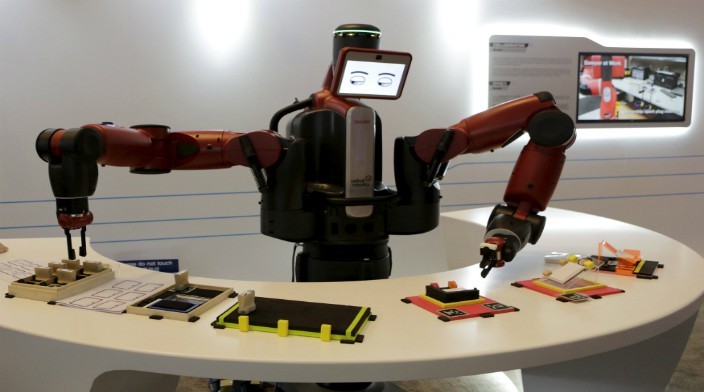
From the geographical perspective of technology, development trends in the field of robotics show, in the first place, the increasing automation of an ever-larger number of areas of activity. Secondly, they highlight the strategic impact of robotics in terms of power, welfare, social relations and health care. Companies and individuals who have access to these technologies will have a crucial competitive advantage, both in terms of economic competitiveness and military power. And, of course, this will also be so in the field of welfare, health care and care for the elderly.
Robot intelligence and capabilities will introduce an alter ego in our social environment, in the same way they already play a central role in performing tasks in industrial sectors. And all of this is going to materialize in cosmopolitan but unequal and stratified societies, which will possibly create new forms of inequality that will superimpose themselves on older forms. At the same time, new opportunities will arise, and, to some extent, the worlds of work and entertainment will be redefined, and possibly even the world of intimate relationships.
Robots have come to us to stay: they are the result of our dreams and our technology
In the future, the most human thing for us might be a robot. Robots have come to us to stay: they are the result of our dreams and our technology. As the myth of Pygmalion tell us, perhaps the robots will be our next Galatea. Would we want to give them life and recognize their rights?
References:
Brynjolfsson, E., McAfee, A. 2014. The Second Machine Age. Work, Progress And Prosperity In A Time Of Brilliant Technologies. New York: W. W. Norton & Company
Ford, M. 2015. Rise of the Robots. Technology And The Threat Of A Jobless Future. New York: Basic Books.
International Federation of Robotics (IFR).2016a. World Robotics. Industrial Robots 2016. Geneva: UN/IFR.
International Federation of Robotics (IFR).2016b. World Robotics. Service Robots 2016. Geneva: UN/IFR.
Kurzweil, R. 2005. The Singularity Is Near. When Humans Transcend Biology. New York: Viking Penguin Group.
Levy, D. 2007. Love And Sex With Robots: The Evolution Of Human-Robot Relationships. London: Harper.
López Peláez, A. (ed.) 2014. The Robotics Divide. A New Frontier In The 21st Century? New York: Springer.
López Peláez, A. 2017. Robotics, Pp. 402-416. In Barf, W. (ed.) Handbook on Geographies of Technology. Massachussetts: Edward Elgar Publishing Limited. http://www.e-elgar.com/shop/handbook-on-geographies-of-technology
Moravec, H. 1999. Robot: Mere Machine to Transcendent Mind. New York: Oxford University Press
In this article I summarize some of the results published in my recent chapter on robotics, published in 2017 in the Handbook of Geographies of Technology, edited by Barney Warf, and published by Edward Elgar, a publisher of the highest prestige in this area. It has just been published in February 2017. This Handbook offers an insightful and comprehensive overview from a geographic perspective of the numerous and varied technologies that are shaping the contemporary world.



